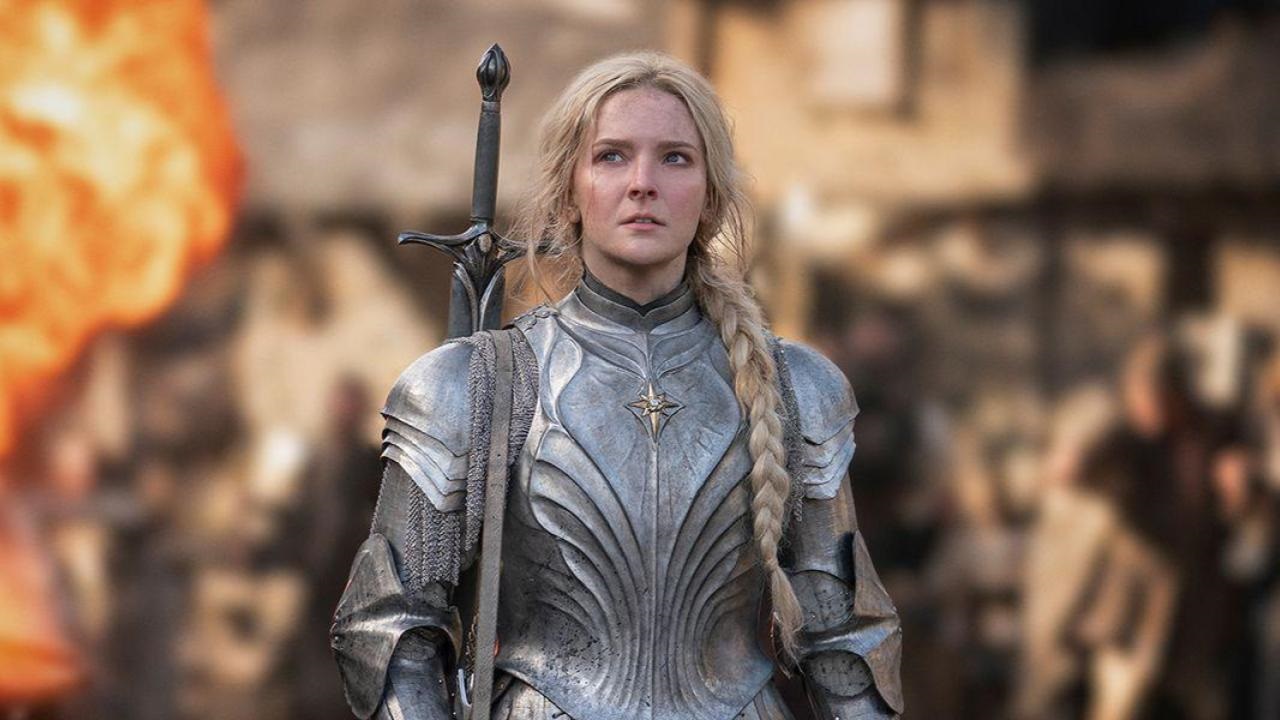Amazon Prime has dipped its toe into Middle Earth, and the results thus far are uneven.
Rings of Power is astonishingly beautiful, its daylight glows a welcome contrast to the grim shadows of HBO’s House of the Dragon. The depictions of the island kingdom of Numenor and the dwarf city of Dwarrowdelf are vibrant and astonishingly detailed. However, the social world that it depicts remains incomplete and at times even awkward, with motivations seemingly imposed by the need to keep episodes moving rather than emerging organically from well-constructed world-building. The problem may lie in how the series has approached the deep logic behind the source material.
The strategic and political thinking that underlies Lord of the Rings is subtle, but it provides necessary space for allowing the character-driven stories to flourish. Bilbo may join Thorin Oakenshield’s company on a lark, but the purpose is deadly serious. The mission to destroy Smaug is a high adventure but also a contingent step to establishing several kingdoms that will fight against Sauron in the war to come. Worried about collusion between Smaug and the Necromancer (Sauron) Gandalf hatches a plan to destroy the one and drive the other forth, opening space for the reconstruction of three northern kingdoms that will play key roles in the War of the Ring. Much of this happens off the page, but the roles played by the characters make sense against this subtle, almost implicit strategic and political background.
Similarly, in Lord of the Rings the tension is not driven a hero bent on revenge, but rather by a series of careful political and strategic calculations made by important players. Aragorn (heir to the ancient throne of the northern kingdom of Arnor) fully appreciates the political difficulty that his person represents; tensions between the ruling stewards of Gondor and the lost claimant to the throne are subtle but evident and they drive the interpersonal tension between Boromir and Aragorn, making that relationship richer. Similar concerns motivate the hobbits, the Rohirrim, and the other characters that people the world.
A veteran of World War I and a scholar of medieval warfare, Tolkien constructed his battle scenes with painstaking care, making certain that the actions of the combatants on either side make sense within their own stories. The Battles of Helm’s Deep and Pelennor Fields are carefully choreographed to demonstrate the qualities and expertise of the main characters. Moreover, because the political and military elements are well thought-out if only subtly demonstrated, we are encouraged to believe that political structures undergird the rest of the world as well. We don’t know much about the coalition that Sauron has assembled to defeat Gondor, but it probably involves a series of political deals that would make sense if Tolkien had taken the time to provide them in detail. Indeed, it is this depth that gives Middle Earth its enduring power as a fantasy backdrop. Although Peter Jackson takes liberties with some of the detail in his adaptations, he retained most of the basic political and strategic arguments that animated Sauron, the Fellowship, and the rest of the players.
In Rings of Power these considerations are less evident. The political substructures of life in Middle Earth are less than clear, in part because Tolkien did not leave a well-constructed description of the relationship between the kings and peoples of Middle Earth. The dwarves, elves, and humans each have a kingdom, but the political nature of the relationships between them is thus far shallow, seemingly animated at this point only by rote descriptions of racial animus. Of the orcs and of Sauron’s allies we know little. The main driver of the story is a vengeance-obsessed Galadriel (an extra-canonical intervention) hunting Sauron across the massive landscapes of Middle Earth, but with little grounding in the politics of the world. This has made it difficult for the series to mine the deep strategic and political logics of the world to good effect, which correspondingly makes the characterizations feel hollow and one-dimensional.
It is of course early, and those familiar with canon certainly appreciate Amazon’s preference for using time and space to build up characters rather than thrust them immediately into the action. We want real gardens for our imaginary toads, and it is not yet obvious that the showrunners of Rings of Power have a sense that world-building has a social and political component in addition to the great cities and extraordinary landscapes that they’ve depicted thus far. Four hours into Peter Jackson’s Fellowship of the Ring we firmly felt a part of the war for Middle Earth; Rings of Power has yet to meet that standard.
A 19FortyFive Contributing Editor, Dr. Robert Farley has taught security and diplomacy courses at the Patterson School since 2005. He received his BS from the University of Oregon in 1997, and his Ph. D. from the University of Washington in 2004. Dr. Farley is the author of Grounded: The Case for Abolishing the United States Air Force (University Press of Kentucky, 2014), the Battleship Book (Wildside, 2016), and Patents for Power: Intellectual Property Law and the Diffusion of Military Technology (University of Chicago, 2020). He has contributed extensively to a number of journals and magazines, including the National Interest, the Diplomat: APAC, World Politics Review, and the American Prospect. Dr. Farley is also a founder and senior editor of Lawyers, Guns and Money.

